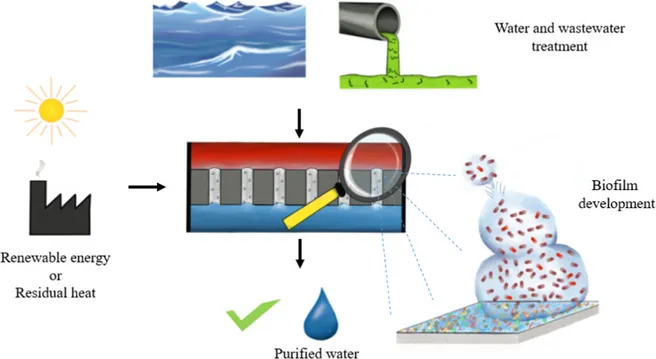Membrane distillation (MD) is a promising technology of the water-energy nexus suitable for generating high-quality water. Like other membrane processes, MD is susceptible to all fouling types. Previously, MD biofouling did not receive much attention since MD operates at temperatures higher than most microorganisms can survive. However, biofouling effects on flux and separation decay in MD are increasingly reported. In this context, this paper reviews with a special focus on MD what a biofilm is, its main components and development stages, and the role of the microbial community succession in the MD biofilm development. How MD operational factors affect the biofouling formation, such as temperature, and consequences of biofilm for MD performance, as flux and rejection decay, are also addressed. Finally, possibilities for mitigating biofouling in MD are presented, and its challenges are discussed. The gaps in the knowledge of the theme and possible directions for future efforts are indicated. It is expected that this contribution can be fuel for further studies on MD biofouling and its mitigation.
